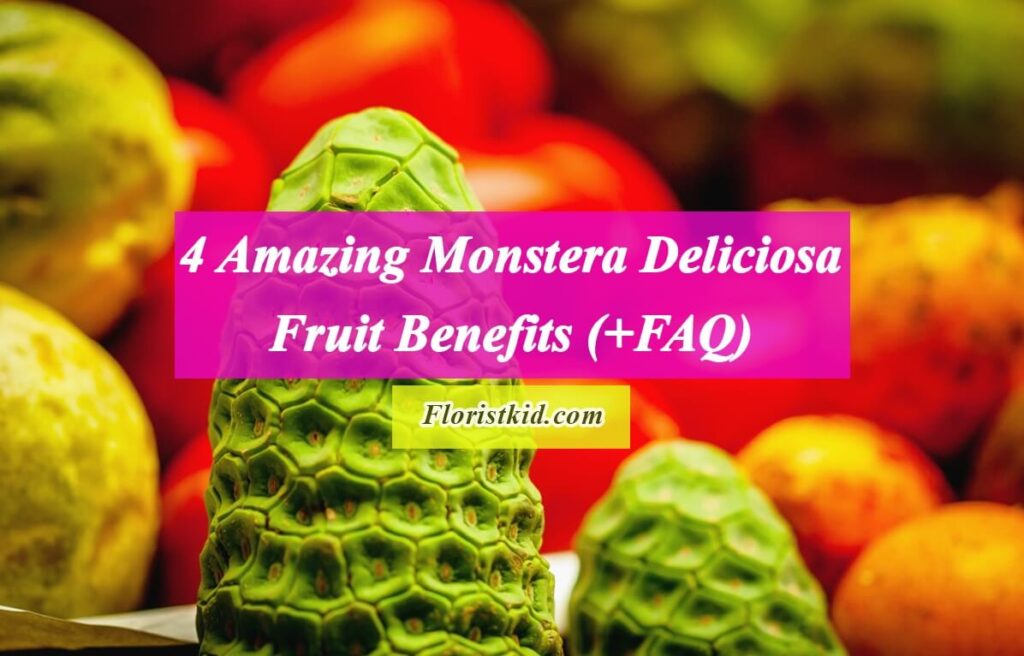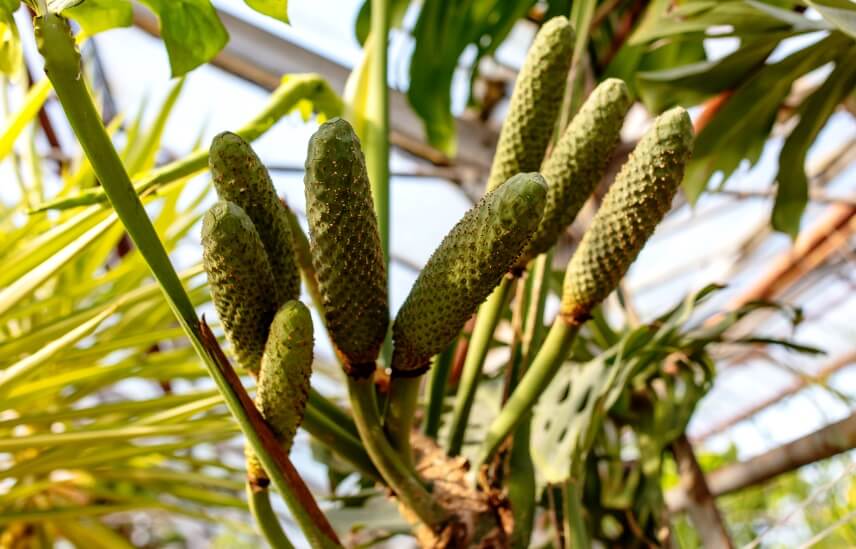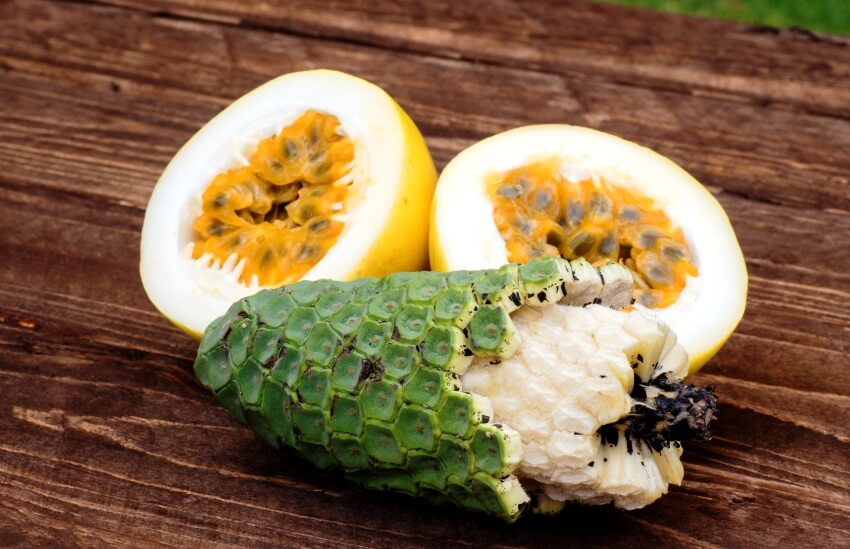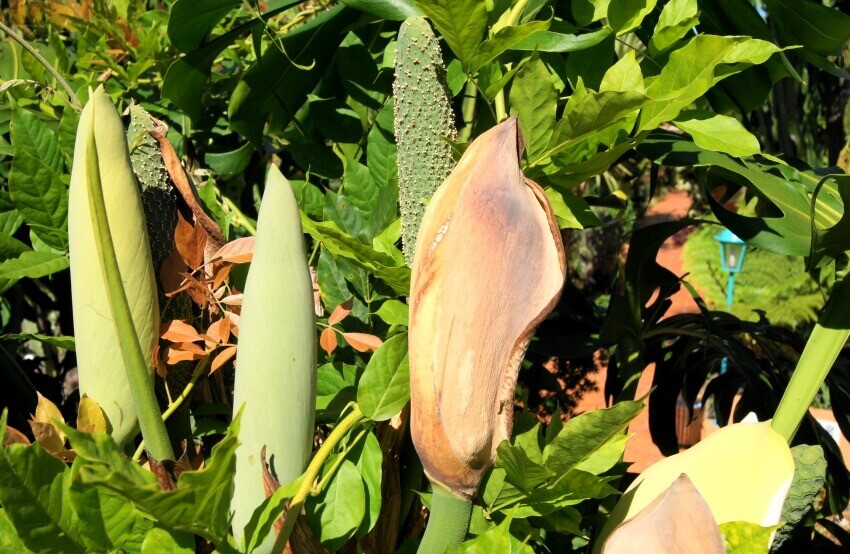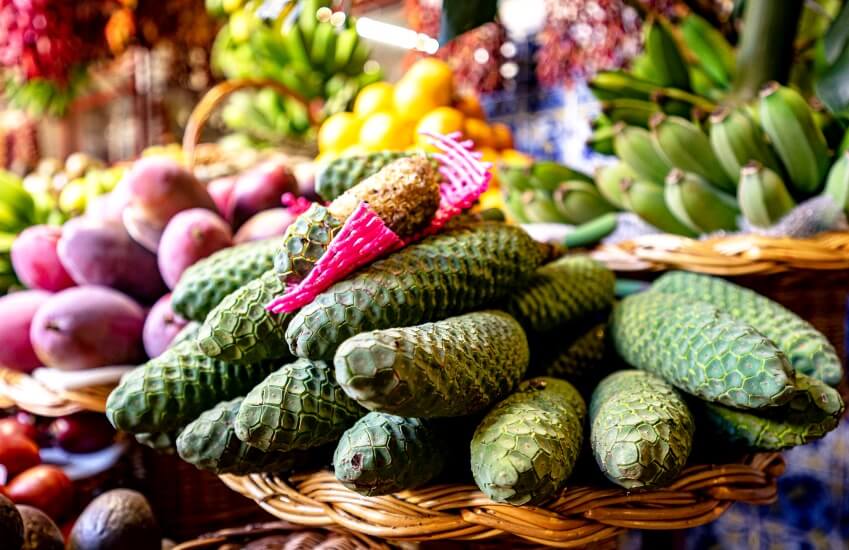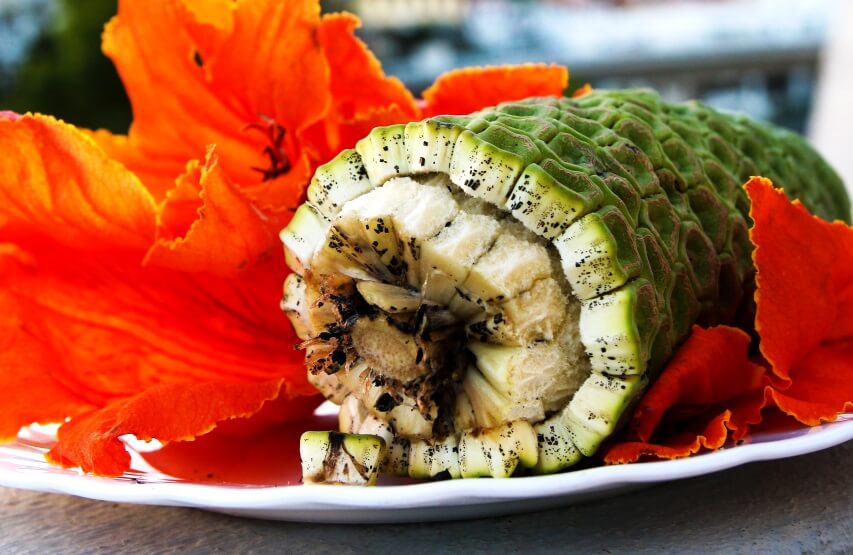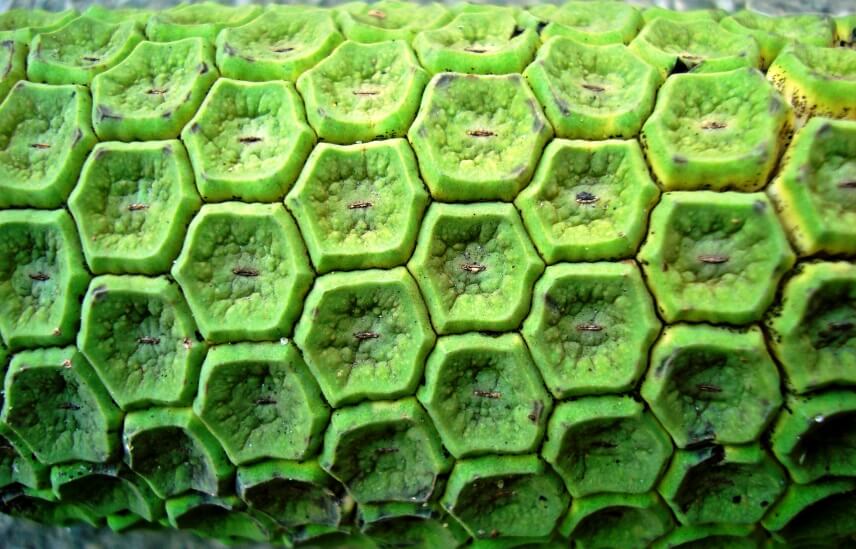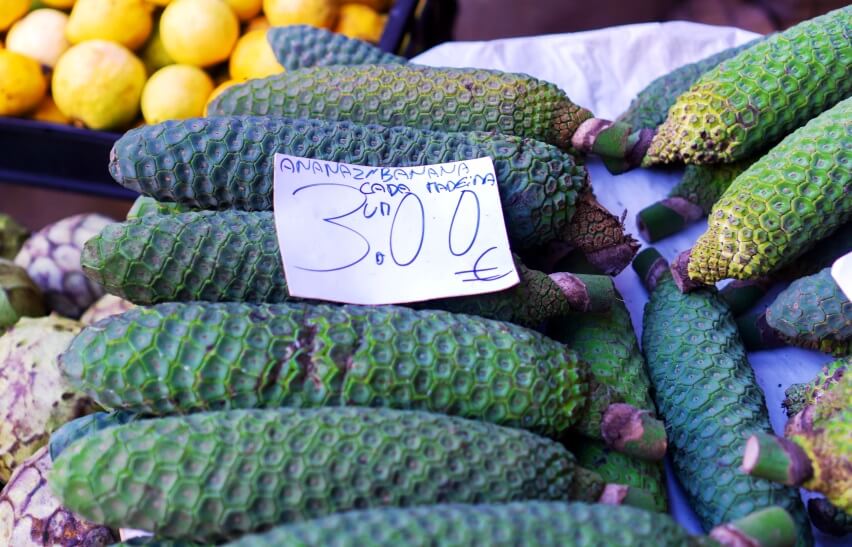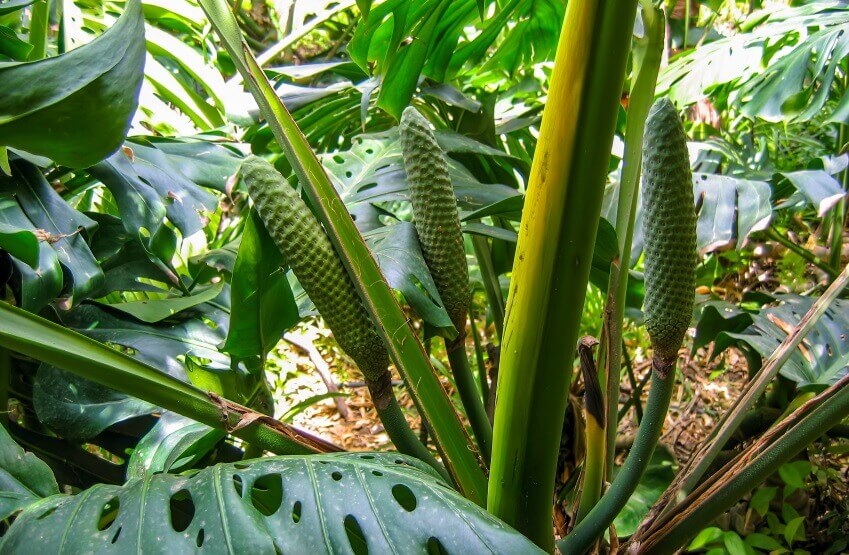Monstera Deliciosa fruit is renowned as a delicious tropical treat. Monstera deliciosa fruit benefits are numerous; However, when it is not ripe, it can shock you with poisonous oxalic acid. The good news is that, with a bit of knowledge, you can determine when the fruit is ripe and ready to eat.
The fruit of Monstera deliciosa has various flavors of passion fruit, strawberry, and banana. It has enough potassium, calcium, vitamin C, protein, and fiber to satisfy your daily nutritious meal need.
Previously, we reviewed Swiss cheese plant benefits. In this article, we will review some of the significant benefits of Monstera deliciosa fruit.
If you are interested in this topic, you can also read
<<Marigold Flower Benefits>> and <<Schefflera Plant Benefits>> articles.
What Is Monstera Deliciosa Fruit?
Before talking about Monstera deliciosa fruit benefits, let’s know more about the taste and shape of this magnificent fruit.
Monstera fruits can reach a maximum length of 10 inches and have a diameter of 1 to 2 inches, tapering slightly at both ends. This fruit has green scales in the form of hexagons that are inedible, semi-smooth, and spongy. These scales act as a protective layer and cover the flesh and core of the fruit [1].
The scales change color from dark to light green, occasionally pale yellow. As the fruit ripens, the scales fall off, exposing ivory to cream-colored flesh. The flesh is separated into tiny, kernel-like capsules that can be removed from the core by hand or with a razor.
The flesh has a honeyed, tropical scent resembling jackfruit and has a soft, watery, and slippery appearance similar to pineapple or mango. The ripe flesh may develop a few black patches. Although these spots are often unharmful, some people with sensitive palates may find them irritating. The spots can be easily scraped and removed from the flesh.
Monstera Deliciosa Fruit Nutrition Facts (Per 100g)
| Nutrient | Amount |
|---|---|
| Water | 87.8 g |
| Carbohydrates | 9.4 g |
| Protein | 1.2 g |
| Fat | 0.6 g |
| Calcium | 83 mg |
| Potassium | 190 mg |
| Sodium | 120 mg |
| Vitamin C | 9 mg |
Monstera Deliciosa Fruit Benefits
Monstera deliciosa fruits offer more benefits in terms of nutrition and taste compared to many tropical fruits. Some of the most important benefits of the Monstera deliciosa fruit are as below [2]:
Nice Taste and Aroma
Although the Monstera plant is difficult to grow fruits, once it does, each fruit has an excellent flavor value. According to Fruits Info, the Monstera fruit offers a variety of flavors depending on when it is collected.
It is worth mentioning that “Deliciosa” is named after the ripe Monstera fruit, which has a delectable flavor and pleasant aroma.
Guava flavor dominates on the first day, followed by flavors of grape, mangosteen, lychee, passion fruit, and sweetsop on subsequent days. However, the best flavor is obtained when the fruit ripens fully, giving a sweet aroma.
Nutritious Fruit
One of the Monstera deliciosa fruit benefits is that this sweet tropical fruit is loaded with macro- and micro-minerals essential for everyday nourishment. An overview of the Monstera deliciosa fruit’s nutritional profile per 100 g is provided in the table below [3].
According to the figures in the table, consuming 100 grams of Monstera deliciosa fruit daily will give 11% of the adult’s recommended vitamin C intake, which ranges from 75 to 90 mg [4]. Additionally, this fruit can supply 10% of the daily recommended calcium intake (1000 mg/person/day) [5] and 6% of an adult’s daily potassium requirements (2600–3400 mg per person) [6].
Boosting Immunity System
Another benefit of Monstera deliciosa fruit is that it is a fantastic source of ascorbic acid, known as vitamin C. This vitamin can mend tendons, muscles, and bodily tissues. Vitamin C can also strengthen your immune system and maintain the health of your teeth, bones, and cartilage.
Antioxidant properties are another benefit of vitamin C. As a result, it can shield you from dangerous compounds in the air and your surroundings. Keeping Vitamin C levels high in the body is crucial as these pollutants can lead to cancer, heart disease, or arthritis.
Functioning As A Laxative
That’s not all Monstera deliciosa fruit benefits. This fruit is recommended for those who experience persistent constipation. Unhealthy meals or medications can occasionally cause damage to our intestines. This fruit can function as a laxative to promote regular, healthy bowel motions.
Monstera deliciosa fruit has hydrating properties. It can hydrate the digestive system to improve effectiveness. Faster nutrient absorption and more comfortable waste passage are both benefits of having healthy intestines. This makes monstera deliciosa one of the effective herbal treatments for preventing constipation.
When To Eat Monstera Aeliciosa Fruit?
You should determine whether Monstera deliciosa fruit is ripe and safe to eat before you consume it.
Usually, Monstera Deliciosa begins to produce fruits a year after generating blossoms, which take a year to ripen fully. After starting to mature, fruit is often ready to consume in the fall or winter of the following year.
As previously stated, uniped Monstera fruit is poisonous. Therefore, wait until the greenish scales start to fall off naturally or can be easily brushed off with your fingers. Eat only the white portion that is just underneath the scale-like green covering.
Once fully matured, the fruits can reach a length of 10 to 12 inches and have hexagonal-shaped scales and a somewhat green texture.
Note: Be careful; eating the unripe fruit may result in nausea, vomiting, and diarrhea, and touching the sap with bare skin could cause itching, rashes, and stinging.
How To Eat Monstera Deliciosa Fruit?
You can enjoy this tasty, exotic fruit in a variety of ways. You can consume the fruit of Monstera deliciosa in the following ways.
- Peel off the greenish scales, then bite off the juicy white portions.
- Use the fruit extracts to make your jam, and serve it with pancakes, ice cream, or toast.
- Slice the fruit into bite-sized pieces and freeze it in freezer bags so you may enjoy frozen fruit cuttings.
- To make a fruit salad or fruit plate, dice the fruit into small pieces and combine it with other tropical fruits.
How To Find Or Buy Monstera Deliciosa Fruit?
While Monstera deliciosa can bloom, pollination is required for fruit to grow. Monstera rarely grows large enough or receives enough light as a houseplant to bloom and produce fruits. It is recommended to use it exclusively as a decorative indoor plant.
Monstera deliciosa fruit is not constantly available for purchase since it is a seasonal fruit. It is usually available from the fall until the winter. You can buy this fruit from grocery shops in its native southern Mexico, Costa Rica, Nicaragua, Honduras, El Salvador, Guatemala, and Belize.
You can also place a preorder on the Miami fruit website. Retail prices, including shipping and handling, for a small box range from $127 (3 to 5 pounds) to $197 (7 to 10 pounds).
Frequently Asked Questions (FAQ)
How Does Monstera Deliciosa Fruit Tastes?
Monstera deliciosa fruit has a unique flavor that is a combination of mango, pineapple, and coconut and a texture similar to a ripe banana [7].
Is Monstera Deliciosa Fruit Toxic?
Cats, dogs, people, and other animals cannot eat unripe Monstera deliciosa fruit or any other part of the Monstera plant, including the leaves, blossoms, stems, roots, and petiole. This is due to the presence of oxalic acid in the Monstera plant’s structure.
Oxalic acid, found in unripe fruit, can irritate the mouth and throat. However, eating the Monstera plant’s ripe fruit is safe. As the fruit ripens, the crystals disappear, leaving behind an edible, soft fruit that tastes like candy and has hints of pineapple, coconut, guava, and passion fruit.
Your mouth, tongue, and lips will resemble a blowfish if you consume unripe Monstera deliciosa fruit. Furthermore, due to the laxative effects of Monstera fruit, consuming too much of this fruit induces a trip to the restroom. You will experience uncomfortable stomach cramps, severe diarrhea, and nausea. A Monstera fruit needs 10 to 14 months to reach full ripeness.
Can You Grow Monstera Deliciosa Fruit Indoors?
It is unlikely for the Monstera deliciosa plant to bloom or bear fruit indoors. However, if you grow them outside in good condition, they bloom and grow fruits.

